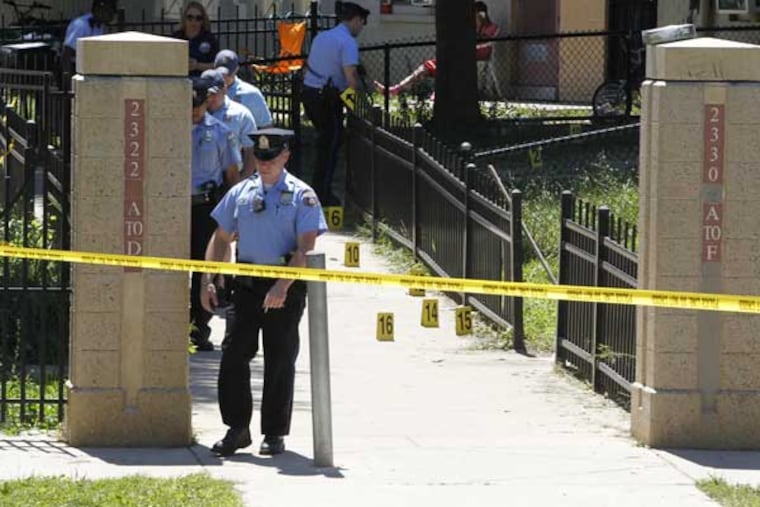Primary School: Philadelphia’s rising homicide problem | Editorial
One big lever in addressing the problem is out of the hands of the city: Gun control measures must happen at the state level — and little action has been taken.

The May 21 primary will not only help decide the composition of City Council and the mayor’s and other offices. Voters will also be signaling their views on key issues facing the city. The Inquirer Editorial Board continues its Primary School series, designed to take a deeper look at some of these issues.
The issue: Philadelphia’s homicide rate is rising, fast. In 2018, 351 homicides were recorded — the most since 2007. Since the last election in 2015, homicides increased 25 percent. Police Commissioner Richard Ross attributes the increase to drugs. The number of drug-related homicides doubled between 2013 and 2015, from 30 to 60, and then again by 2018, to 120. Two curiosities: Over the same time frame, overall crime has been decreasing — 11 percent since 2015. More strangely, shootings have been increasing at a slower rate, rising only 10 percent at the same time that homicides increased by 25 percent. In 2017, for example, Philadelphia saw the fewest shootings in the past five years — 1,220 — but the second highest homicides — 315.
How we fare nationally: At the same time that Philadelphia’s homicide rate is increasing, other large cities — including Chicago, infamous for its high murder rate — reported declines, according to an analysis by the Brennan Center. The homicide rate in Philadelphia has seen sharp increases and decreases in the past. Between 2012 and 2013, homicide dropped by 25 percent — from 331 to 248. At the same time, the U.S. overall experienced the lowest homicide rate in decades in 2013.
What can a mayor do about it? In January, the Mayor’s Office published the Philadelphia Roadmap to Safer Communities. Most of the programs outlined are not revolutionary — expanding job training, intelligence-led policing, cleaning vacant lots, and raising awareness. A few weeks before its release, the city Office of Violence Prevention published a review of the 40 city-funded violence-prevention programs. They found programs do not target those most at risk and that the city significantly overestimated how much money it spent on violence prevention.
There is a generational aspect to violence that can’t be ignored — poverty, lack of opportunity, access to guns, and environmental hazards are factors. But one big lever is out of the hands of the city: Gun control measures must happen at the state level — and little action has been taken.
What more can be done in the short term? The city could be doing a better job vetting programs that receive funding and in making more funding available. Investment in research is also needed; deaths could be prevented, for example, if we knew more about why the number of shootings fluctuates while the number of homicides steadily increase.
What are long-term solutions? No candidate — for mayor or City Council — has suggested any cure-all policy for Philadelphia’s shootings and homicides problem. Probably because there isn’t one. Only long-term investment in eradicating poverty, addiction, offering mental-health services, containing illegal drug markets and ensuring opportunity for everyone will reduce violence in Philadelphia.